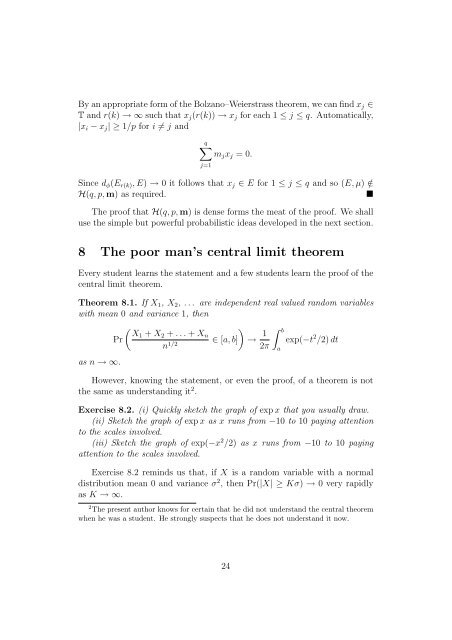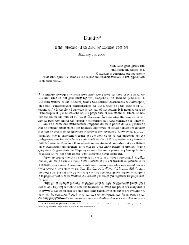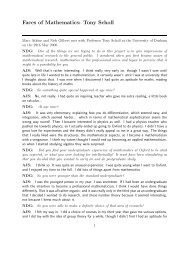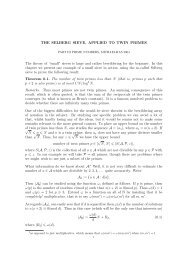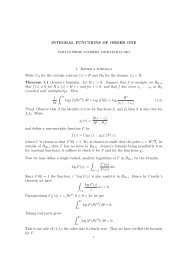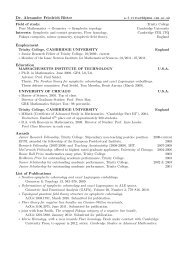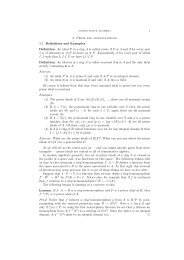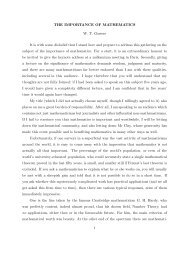Baire Category, Probabilistic Constructions and Convolution Squares
Baire Category, Probabilistic Constructions and Convolution Squares
Baire Category, Probabilistic Constructions and Convolution Squares
Create successful ePaper yourself
Turn your PDF publications into a flip-book with our unique Google optimized e-Paper software.
By an appropriate form of the Bolzano–Weierstrass theorem, we can find xj ∈<br />
T <strong>and</strong> r(k) → ∞ such that xj(r(k)) → xj for each 1 ≤ j ≤ q. Automatically,<br />
|xi − xj| ≥ 1/p for i = j <strong>and</strong><br />
q<br />
mjxj = 0.<br />
j=1<br />
Since dφ(Er(k),E) → 0 it follows that xj ∈ E for 1 ≤ j ≤ q <strong>and</strong> so (E,µ) /∈<br />
H(q,p,m) as required. <br />
The proof that H(q,p,m) is dense forms the meat of the proof. We shall<br />
use the simple but powerful probabilistic ideas developed in the next section.<br />
8 The poor man’s central limit theorem<br />
Every student learns the statement <strong>and</strong> a few students learn the proof of the<br />
central limit theorem.<br />
Theorem 8.1. If X1, X2, ... are independent real valued r<strong>and</strong>om variables<br />
with mean 0 <strong>and</strong> variance 1, then<br />
as n → ∞.<br />
<br />
X1 + X2 + ... + Xn<br />
Pr<br />
n1/2 <br />
∈ [a,b] → 1<br />
2π<br />
b<br />
a<br />
exp(−t 2 /2)dt<br />
However, knowing the statement, or even the proof, of a theorem is not<br />
the same as underst<strong>and</strong>ing it 2 .<br />
Exercise 8.2. (i) Quickly sketch the graph of exp x that you usually draw.<br />
(ii) Sketch the graph of exp x as x runs from −10 to 10 paying attention<br />
to the scales involved.<br />
(iii) Sketch the graph of exp(−x 2 /2) as x runs from −10 to 10 paying<br />
attention to the scales involved.<br />
Exercise 8.2 reminds us that, if X is a r<strong>and</strong>om variable with a normal<br />
distribution mean 0 <strong>and</strong> variance σ 2 , then Pr(|X| ≥ Kσ) → 0 very rapidly<br />
as K → ∞.<br />
2 The present author knows for certain that he did not underst<strong>and</strong> the central theorem<br />
when he was a student. He strongly suspects that he does not underst<strong>and</strong> it now.<br />
24


